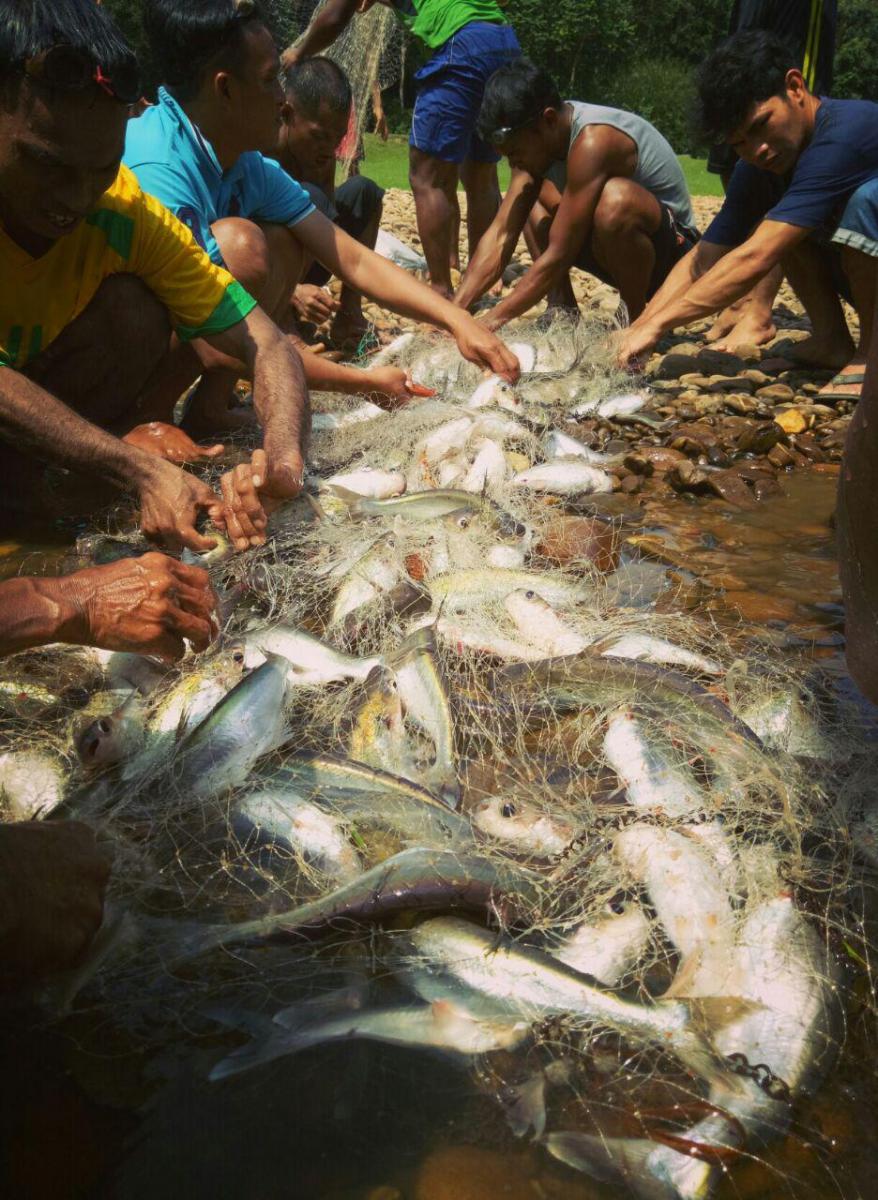Enjoying Bakacau Chilli at Batu Sanggan
By Ary Lesmana
For you culinary fans, this one food is challenging to try. It’s not just spicy, but to enjoy this food, you need to take a long journey.
To reach Batu Sanggan in Riau Province, you need to travel over land for approximately 2 hours from Pekanbaru to Kampar Kiri district. From the docks in the village of Gema, the journey continues with ketinting boat upstream. People call this boat 'johnson' or 'robin' referring to the type of machine used. Depending on the Sebayang River, for approximately 1.5 hours, you will be treated to stunning scenery with clear river water, cliffs, and hills that are still lush with various trees. When crossing the river, often seen ropes that stretched across the river on several segments. If you're lucky, you'll see lizards perched on the banks of rivers, snakes slithering by, and monkeys searching for food.
Batu Sanggan Village is a small riverside village composed of about 130 households, which are included in the Wildlife Reserve area. The main livelihood of the population is rubber tapping, where the price and income are often uncertain. There are no alternative jobs available. Timber harvesting is difficult because people are bound by strict adat rules and government restrictions at the regional status. Therefore, people try to pioneer income alternatives with environmentally friendly tourism efforts. The tourism potential is clearly visible because the environment is still protected, the river is clear, the local residents are friendly and hospitable, and the culinary dishes are unique, such as sambal bakacau.
This particular dish is freshwater fish boiled, crushed, and mixed with sambal hijau, or green chili sauce. The fish is crushed along with its bones, so you must be very careful when eating. The blend of fresh fish, spices, and green chili really increases the appetite. Sometimes they add yams and the leaves of cassava, which grow a lot in the surrounding villages. It is called "sambal bakacau" because it looks like a mess, a mix of green chili, yams, and freshwater fish. This dish has its own story, a stressful one, as before, most parents had a lot of children while caught only few fish. So there was insufficient fish when divided by all the family members. Therefore, it made sense to pound the fish and mix it with chili so that it can be divided equally to all family members. This story highlights the difficulty of life for the Batu Sanggan society in the past, even finding fish is not enough for the whole family.
 Catching fish in Lubuk Larangan. Photo by Sonny Mumbunan/WRI
Catching fish in Lubuk Larangan. Photo by Sonny Mumbunan/WRI
Currently, the supply of freshwater fish in Batu Sanggan is actually quite abundant, but can not be harvested at any time. There are several points along the Sebayang River set by the surrounding community as "Lubuk Larangan" which can not be exploited by anyone at any time. The area of the ban is marked by a long rope stretching over the river. Under the rope is where the fish breed.
Determining which segments are prohibited happens through discussions and agreements that all people have to comply with. There is a customary fine for violations. It is this conspicuous agreement that keeps fish populations strong, rivers clear and forests lush.
If you’re lucky, besides enjoying sambal bakacau, you can also watch fish being harvested in the prohibition area. One harvest can produce 30 kilograms of fish. Different species of fish flipping in the net can be an attraction on its own to pay for your trip.